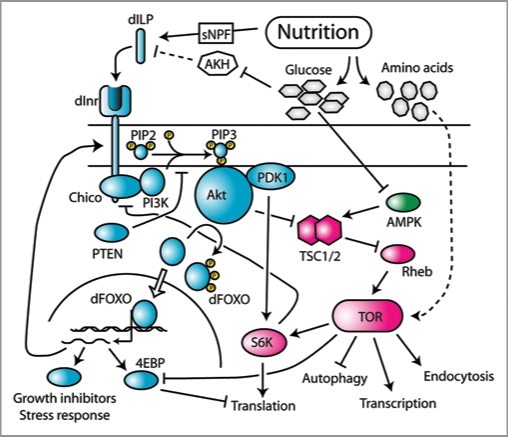Figure 4.
The II S and TOR-signaling pathway in Drosophila. The II S pathway is shown in cyan, the TOR-signaling pathway is shown in magenta, and the AMPK signaling pathway is shown in green. Variation in nutrition influences the release of dILPs, possibly by the action of sNPFs and AKH. dILPs bind to Inr which initiates a signal transduction cascade involving the phosphorylation of multiple intermediate proteins. Downstream growth affectors include dFOXO, which is deactivated by II S via phosphorylation by AKT, and S6K, which is activated by II S via PDK1. S6K is also a target of TOR, which also restricts the effects of dFOXO by inhibiting one of dFOXO’s transcriptional targets, 4EBP. TOR is also regulated indirectly by II S via the action of AKT on TSC1/2. TOR also responds to amino acids, by an unkown mehchanism, and glucose, via the AMPK pathway. Both FOXO and TOR regulate the activity of multiple growth inhibitors and promoters, respectively. Data from references 37, 43 and 50. Dotted lines are putative relationships.

